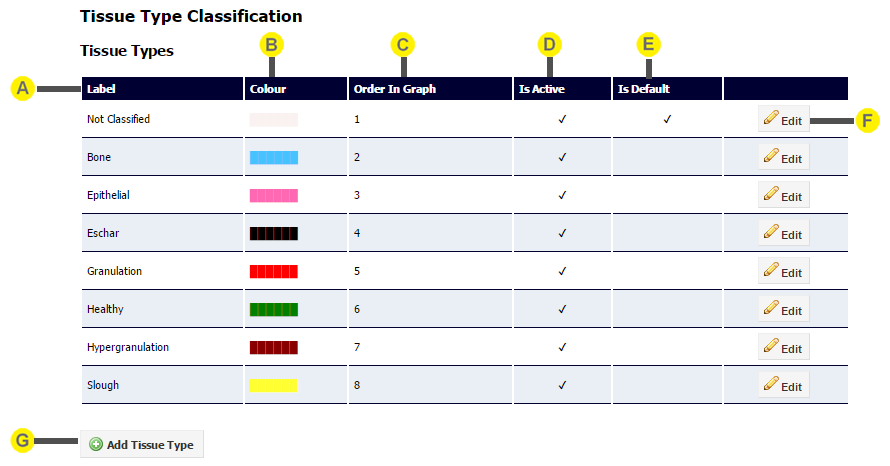Open topic with navigation
Tissue Type Classification
A tissue type defines an extra way that wound outlines can be assigned. They will be used to divide wounds into outlines, which can then have a tissue type assigned (so a wound can be part necrotic and part granulating). The default list defined is Not Classified, Bone, Epithelial, Eschar, Granulation, Healthy, Hypergranulation, and Slough
To define and manage tissue types, select Organization >Tissue Types.
The order in which the tissue types appear in the list, is the order in which they will be shown in on the Trace Tissue screen in SilhouetteConnect. To change this order, drag-and-drop the items to reposition them.

|
|
Label
The name defined for the Tissue Type.
|
|
|
Colour
The colour for the tissue types. This defines how its displayed on the graphs, in the reports, etc.
|
|
|
Order in Graph
The index of where in the graph the tissue type will display. Lowest number at the top, highest at the bottom.
|
|
|
Is Active
Determines whether the tissue type can be selected by the user. Only 10 tissue types can be active at a time.
NOTE: Tissue types cannot be deleted. Inactive types will still be shown for any assessments that they have been added to.
|
|
|
Is Default
If a tissue type is marked as default, then that will be the one that gets automatically assigned to any new tissue outline in SilhouetteConnect. Only one tissue type can be marked as default.
|
|
|
Edit button
Click the Edit button to amend details for the tissue type.
When you are finished, click on the Save button to save your changes.
|
|
|
Add Tissue Type
Click the Add Tissue Type button to define a new tissue type.
|

